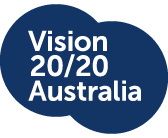Overseas development assistance provided by Australia produces substantial results that have influenced the lives of millions of people in our region. This influence can be seen in several areas. Whether it be through working in partnership with our neighbours to invest in education of future generations around our region; building infrastructure that facilitates faster, cleaner and better access to services; improving water and facilities or providing opportunities and developing skills to improve their agricultural yields and compete in a fairer market.
According to the Campaign for Australian Aid, Australia’s development assistance achievements from 2015 include:
- 1.4 million more children enrolled in school
- 35 million children vaccinated against measles
- 4.3 million households now have safe access to clean water.
In 2016 we are faced with a situation where Australia has regressed from our progress towards the 0.5 per cent of GNI commitments, and is now investing a mere 0.23 per cent of GNI. While this is driving a review of how we can maximise the impact of the reduced resources and maintain an influential and supportive role in regional development, these reductions will begin to demonstrate significantly reduced results and impacts.
Importantly, Australia has had a leading role in mobilising the world to address what is a solvable priority— reducing avoidable blindness.
Australian investments in reducing avoidable blindness in the region
Recognising that reducing avoidable blindness was achievable was what sparked a catalyst for change in Australia. It generated a pre-election bipartisan commitment in 2007 from the then Government and Opposition, both agreeing to allocate funding to eye health as part of the overseas aid program.
Australia was also very active in the lobbying that resulted in the recognition that ending avoidable blindness was possible and could have flow-on benefits that would help drive economies and further growth. Australia’s efforts were a significant influence behind the World Health Assembly endorsing Universal Eye Health: A Global Action Plan 2014-2019 (the Global Action Plan) in 2013, which has been guiding global efforts to achieve a common goal of reducing avoidable blindness and vision loss by 25 per cent.
In 2015, statistics began to emerge that demonstrated significant progress had been made toward achieving this goal, particularly in the Indo-pacific region.²
While Australia is not alone in investing in eye health and avoidable blindness, Australia has been an influential and important partner supporting sustainable change in pursuit of the Global Action Plan goal.
In 2009, Australia established the Avoidable Blindness Initiative (ABI). Through this initiative, Australian government programs have invested in strengthening services to prevent and treat avoidable blindness and vision loss across the Indo-Pacific region. Australian organisations have worked with national partners to utilise eye health as an opportunity to develop a range of initiatives.
The ABI funded joint initiatives through the Vision 2020 Global Consortium, bilateral programs and direct funding to individual non-government organisations.
Investment that demonstrates results
Utilising Australian expertise and influence
Examples from the Australian Government-funded Global Consortium East Asia Vision Program that leveraged Australian expertise for substantial locally-led developments include:
- Establishing the first ever Bachelor of Optometry and Vision Sciences that is now training a new generation of eye health service providers to meet the growing needs of myopia and other avoidable or treatable vision loss needs affecting the Vietnamese population.
- In Timor-Leste, up until 2015, there was only one Timorese clinician qualified and capable of providing Cataract surgery. In 2016, there are now four individuals recognised by the Ministry of Health and national hospital who are able to provide cataract surgery as part of the National Eye Centre. A significant step in Timor-Leste’s efforts to reduce rates of one of the most common cause of avoidable blindness.
- In Cambodia, the Australian Government has supported tertiary educators to develop their teaching and clinical skills and drive the improvement of ophthalmology residency training. As part of this same program, Australia has also supported the establishment of an active Cambodian Ophthalmology Society which is driving the development of its own formal Continuing Professional Development program which will support future growth and improvement of the profession, services and impact.
Development as an ongoing journey
Some recent examples include South Korea, Malaysia and Thailand, which were all significant recipients of development assistance in decades past, all featured as top ten two-way trading partners with Australia in 2014.³ Not all countries who are aid recipients will result in becoming major trading partners. However, building relationships support and understanding between countries does enhance these possibilities and opportunities for trade in the long-term. The aid program is one mechanism that can facilitate this while simultaneously working with our neighbours to support development initiatives that impact the lives of the poorest in our region.
Sustainable change
